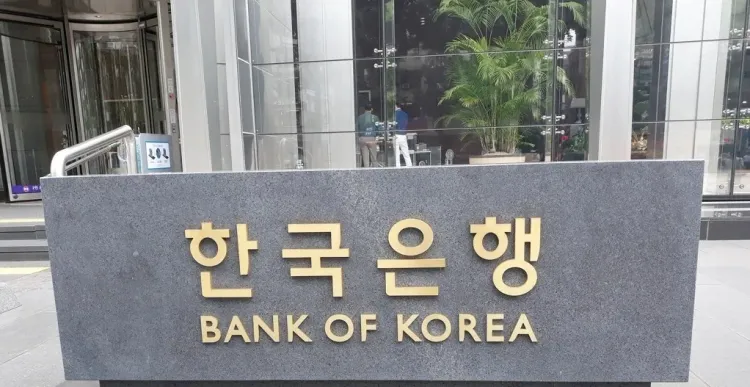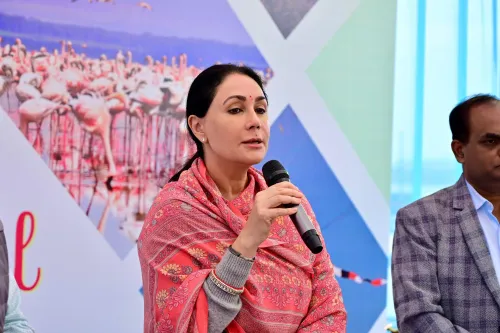Why is BOK Holding the Key Rate Steady Amid Housing Market Concerns?

Synopsis
Key Takeaways
- BOK maintains interest rate at 2.5%
- Third consecutive hold to ensure stability
- Real estate prices remain a concern
- Household debt reaches record levels
- Government implements stricter regulations
Seoul, Oct 23 (NationPress) The central bank of South Korea has decided to maintain its benchmark interest rate at 2.5 percent for the third consecutive time in light of the soaring housing prices and a depreciating currency. The Monetary Policy Board of the Bank of Korea (BOK) reached this widely anticipated conclusion during its recent meeting in Seoul, as reported by Yonhap news agency.
This decision reflects the BOK's commitment to ensuring financial stability while acknowledging the necessity of supporting economic recovery through monetary easing.
“We must closely watch the conditions surrounding financial stability, particularly the impact of real estate market stabilization measures on housing prices in Seoul and its nearby regions, as well as on household debt and exchange rate fluctuations,” stated the BOK in an official announcement.
At the press briefing, BOK Governor Rhee Chang-yong noted that five out of six board members endorsed the decision to maintain the current rate, although four members expressed the importance of keeping the door open for potential rate cuts in the upcoming three months.
The central bank initiated its monetary easing cycle in October of last year, reducing the key interest rate by a total of 100 basis points, with the last cut occurring in May.
However, the BOK's options are constrained due to escalating home prices in Seoul and neighboring areas, which have significantly contributed to rising household debt.
“The real estate prices in Seoul and the greater Seoul area are excessively high when compared to income levels, posing risks to social stability… I believe these prices are detrimental to economic growth,” Rhee remarked.
“While economic growth is currently sluggish and the circumstances don't favor a rate freeze, lowering borrowing costs could boost the real estate market. By holding rates steady, we indicate that any future rate cuts will likely be gradual,” he added.
Market expectations have shifted towards anticipating another rate cut in November, followed by an extended pause.
The government has implemented various strategies to temper the real estate market. Recently, 21 additional districts in Seoul were designated as speculative zones, thus bringing all 25 districts in the capital under stricter regulations.
Moreover, lending criteria have been tightened, with the mortgage loan cap reduced from 600 million won to 200 million won (approximately US$139,600).
Despite stricter regulations, the total outstanding household loans from South Korean banks have continued to rise, reaching a record high of 1,170.2 trillion won at the end of last month, although the growth has decelerated.
As of the end of June, the household debt-to-GDP ratio stood at 89.7 percent, reflecting a 0.3 percentage point increase since three months prior, marking the first quarter-on-quarter rise in 15 quarters.
The depreciation of the won has also emerged as a significant concern for policymakers.
The local currency has plummeted to below 1,420 per dollar, its lowest point in months, amid the persistent strength of the U.S. dollar and uncertainties surrounding tariff negotiations with the United States. A rate reduction could exacerbate the won's decline and incite capital outflows.
On Thursday, the local currency opened at 1,431.8 per dollar, down 2 won from the previous day.
“I anticipate some easing of the currency if tariff discussions come to a conclusion and uncertainties are alleviated. However, we await specific details regarding the pledged $350 billion in investment funds,” Rhee stated. “Our primary focus is not merely on the exchange rate level but on mitigating volatility.”
In July, a framework agreement was reached between Seoul and Washington, wherein the U.S. would enforce a 15 percent tariff on South Korean goods instead of the initially proposed 25 percent, while Seoul would establish a $350 billion fund for U.S. investments.










